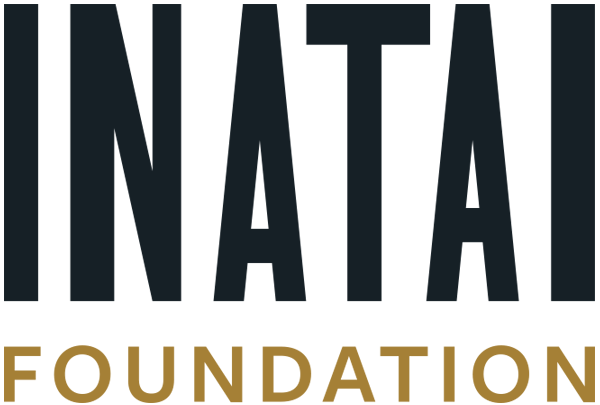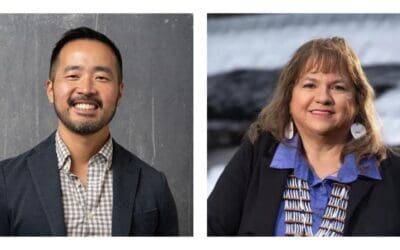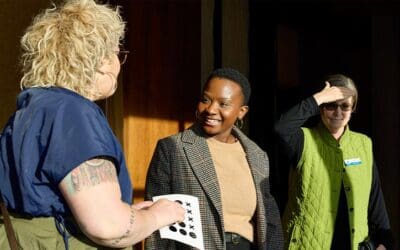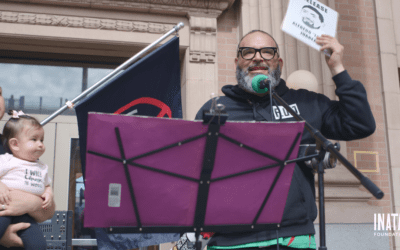Until Feb. 1, 2023, we were Group Health Foundation. This post was written under our former identity. To learn more about our new name, read our announcement here.
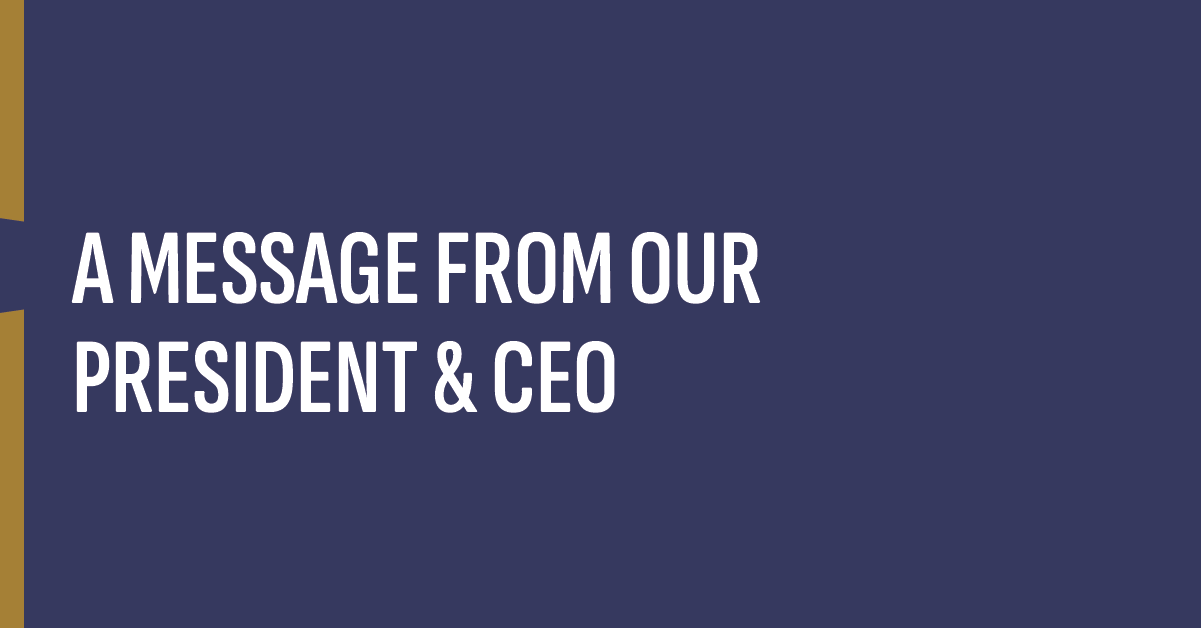
Last year profoundly changed all of us. We endured many challenges and bore witness to—and participated in—beautiful demonstrations of perseverance, solidarity, and commitment to each other and to what we firmly believe can be a better, more just world.
As a newer organization, we are solidifying a tradition to practice reflection in the new year. We hope to transparently offer what we learn along the way, even the hard lessons. As our elders and first teachers have taught us, making time to listen, learn, and absorb is vital to the longevity of our collective work and our ability to stay focused on the change our grant recipients and Washington communities deserve.
Over the last year, I have been thinking a lot about one of my favorite James Baldwin quotes—and to be blunt—it has helped me stay focused: “I can’t believe what you say, because I see what you do.” A few months ago, we asked you to judge our foundation by whom we fund, whom we hire, and whose voices we center. To begin the new year, I want to share where we spent our dollars, time, and capacity over our first 14 months of grantmaking.
Group Health Foundation committed at least $74 million to more than 500 organizations beginning late 2019. Last year was our first full year of funding and we, like many of you, found ourselves having to adapt again and again. The COVID-19 pandemic, the global uprisings against police brutality and anti-Black racism, the devastating wildfires in our state, and the November elections were catalysts to accelerate strategies and, frankly, move a lot quicker to get money out the door to organizations and leaders doing the work to make our state more equitable.
We were careful in collecting data on where and to whom our funding was going so that we can hold ourselves accountable and be transparent about how we are living our values. With that said, we still have instances where our information is incomplete and imperfect. This is partially because we are building our grants management system as we are making direct grants, and partially because organizations and people don’t fit into neat little boxes.
Our data show we committed more than 80 percent of our grants to culturally specific, cross-racial, multicultural organizations and coalitions, and Indigenous nonprofits and tribal governments. These organizations partner with their communities on a wide range of work, including justice for transgender and gender-diverse people, urban farming and food sovereignty, universal health care and community-centered healing, educational equity, cultural reclamation, environmental and economic justice, and so much more.
Borrowing definitions from Coalition of Communities of Color, culturally specific organizations demonstrate through their leadership, community engagement, history, and governance that they are by, of, and for a culture or community. Here is where the dollars went:
- More than $13 million went to Indigenous organizations, including tribal nations;
- More than $12 million went to Black and African-American organizations;
- More than $12 million went to Latina/o/x organizations;
- More than $4 million went to Asian organizations; and
- More than $2 million went to Native Hawaiian and Pacific Islander organizations.
An additional $19 million went to organizations who have multiracial leadership, or whose staff and board have multiple racial identities. Multiracial may also be how an organization self-identifies. For example, one common piece of feedback we heard from grant recipients is to acknowledge Asians and Pacific Islanders as separate communities. In response, organizations led by both Asians and Pacific Islanders are considered multiracial and multicultural and were not included in the culturally specific Asian organizations number above.
Across our work, we are proud to support a multiracial cohort of immigrant-serving and immigrant-led organizations, including groups who focus on a diversity of immigrant communities from African, Central American, East Asian, and Southeast Asian countries, as well as people from Mexico and Muslim communities. Our support for immigrant justice includes organizations that operate community and cultural programs, lead legal advocacy and civil rights work, and mobilize direct-action that brings attention to detention and health inequities faced by immigrant communities and migrant workers.
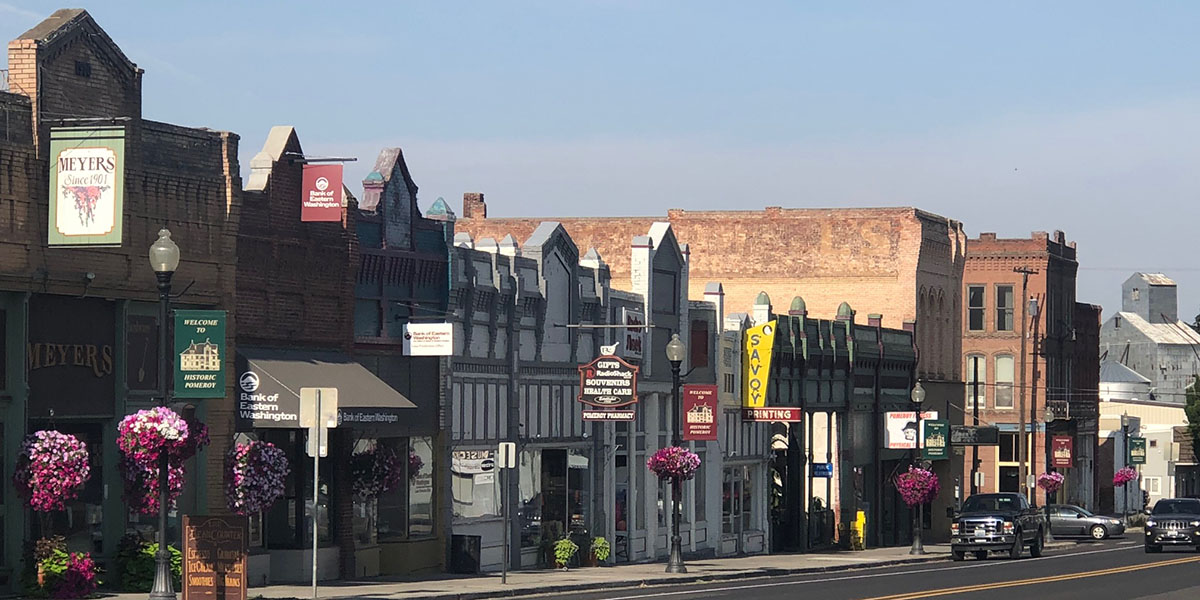
Our team snapped this photo in 2019 during a community visit to Pomeroy in Garfield County.
At least 15 percent of our funding went to historically white organizations, and this includes white-led nonprofits who hire people of color to senior level roles without intentionally changing culture, values, or approaches. The historically white organizations we funded also identify as LGBTQ-serving organizations, rural and anti-poverty nonprofits, and disability-led efforts. They are also public health departments and organizations who identify as doing statewide advocacy work.
Geography and proximity to resources serve as important markers for our work. Thirty-three percent of grant dollars went to large and mid-size cities, including the Tri-Cities, Spokane, Vancouver, Tacoma, and Seattle. Twenty-two percent of our grants went to rural communities, 9 percent to suburban areas, and 7 percent to small and medium-size towns. In learning what it means for us to be more equitable when it comes to where we direct funding, grant recipients have shared over and over again that common language used, such as “urban” and “rural,” minimize and invisiblize large and important parts of our state. We have attempted to honor how they define themselves.
Another descriptor we are examining is for statewide organizations, which received 21 percent of our grants. There are two ways we look at statewide work. One is whether an organization’s advocacy, systems, and narrative efforts have an impact across or throughout many regions of the state, even if they are primarily based in one region. We also examine where their operations, staff, and leaders are located throughout Washington. These are questions we are closely examining because we have learned that many organizations who describe themselves as statewide are largely in Seattle, with a majority of their board and staff calling the Puget Sound home.
Finally, 8 percent of our dollars were directed outside of Washington for work that would affect communities in our state. They were spent on state-level and national efforts to increase voter engagement, preserve voting rights, and fight disinformation during the last election cycle.
The numbers within the more than 500 grants we made don’t share all the complexity and beauty that live within the stories, experiences, and incredible work each organization and community is undertaking. As a learning foundation, we are committed to ongoing discovery and sharing knowledge, and I am excited to let you know that we will follow up our report, A Year on the Road, with more community insights this spring.
When I reviewed where we sent our resources over these 14 months, two thoughts immediately came to mind. First, I am proud that we met with so many diverse leaders and organizations doing amazing work in every corner of our state. There is no excuse or justification for not getting dollars directly to the people who have the deepest expertise in their communities. We are free and untethered from any false assumptions that there are not incredible leaders, organizations, and advocates for health equity everywhere.
The second thought I am grappling with is this: What we have done is not enough. When I think about the last century of inequities and the way our state’s public and private dollars have been distributed, I know our first grants are only a drop in the bucket. Our work as a Foundation is just getting started, and our drive to address inequity is what is fueling us for what’s ahead.
At the forefront of what’s ahead is continuing to form and deepen relationships with the 500-plus organizations we are just beginning to know and who are just starting to know us. We firmly believe that progress moves at the speed of trust. The longest relationship we hold are with grant recipients from late 2019. In order to be good philanthropic partners, we need to better understand organizations’ and communities’ aspirations so that we can build a supportive infrastructure in service of their work.
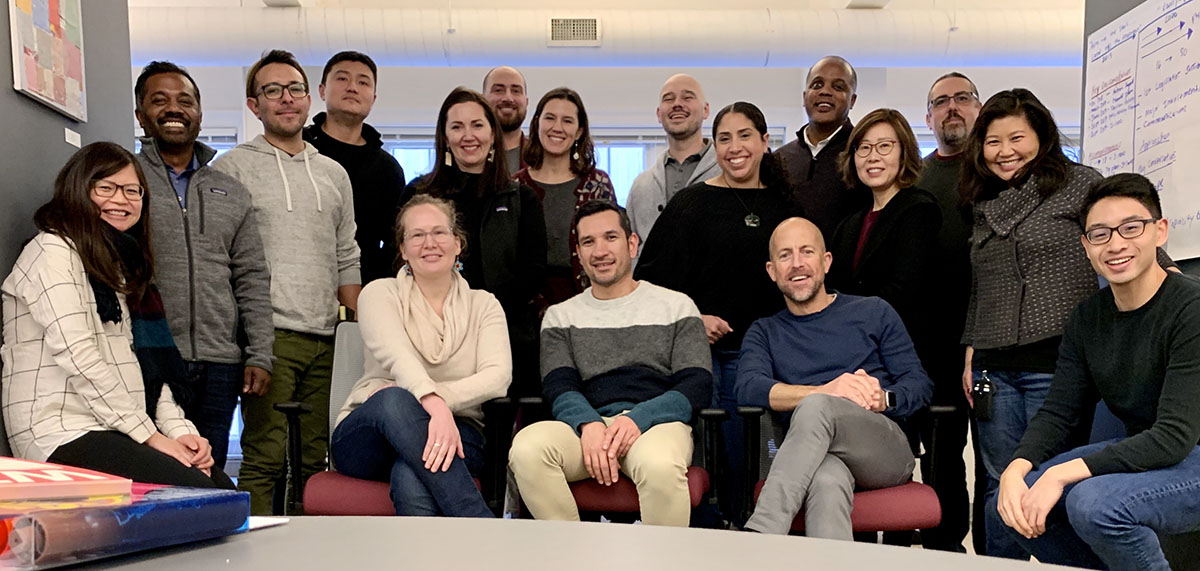
Group Health Foundation staff in January 2020 at our last in-person retreat.
Part of this infrastructure creation includes building a team who reflect the lived experiences of the communities we serve. In 2020 we welcomed 14 new staff, including our newest vice president of programs, Carmen Berkley, who will officially join us next month. One of our hopes for 2021 is for it to be safe again for us to be with each other; nearly half of us have not meet each other in person! We are also looking forward to traveling throughout the state to visit communities and opening our next offices in Pasco and Tacoma.
We hope you find these insights about our early work valuable and that you will continue to hold us accountable by our actions. Group Health Foundation will continue to be deeply grounded in our values and our belief that communities most impacted know what they need. We will continue to grow as a team, add capacity, take risks, and make mistakes. We continue to believe that change can happen and our strategy will be shaped by every relationship we build. 2020 has brought pain on more levels than I am capable of describing, but it has also given us the gift of deep clarity about who we are and what we can achieve together. While we are not underestimating how challenging 2021 will be, we cannot wait to move forward with all of you and welcome the lessons offered in this new year.
In gratitude,
![]()
Nichole June Maher
